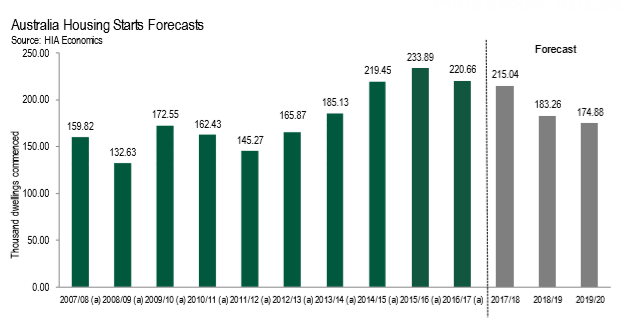With the release recently of Australia’s dwelling construction data for the March quarter of 2018, it’s once again time to examine how Australia’s dwelling supply is tracking against population growth.
The below charts track the following, which are based on the latest available quarterly data:
- Dwelling approvals to March 2018;
- Dwelling commencements to March 2018;
- Dwelling completions to March 2018;
- Population change to December 2017; and
- Net dwelling additions to March 2018.
First, the national picture shows that dwelling approvals and commencements have rebounded after falling sharply from recent all-time highs. After surging recently, completions fell in the March quarter, but should rebound in concert with the other two leading measures. Population growth had also retraced to 388,000 people in the year to December 2017:
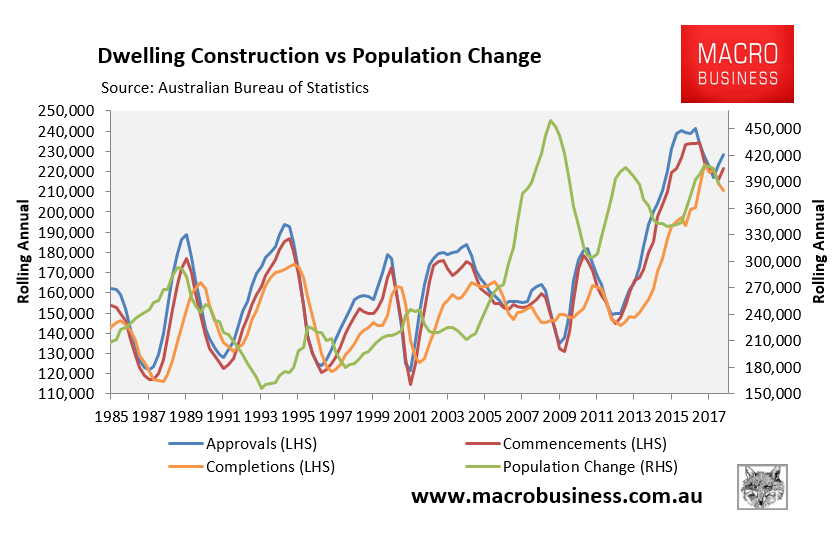
Overall, the dwelling construction boom is unlikely to rebound to recent all-time highs, although the slowdown in activity should be fairly gradual. Population growth is also likely to remain turbo-charged for the time being.
Separate data on net dwelling additions – which is arguably the best data to use when assessing actual dwelling supply, since it takes into account demolitions as well as new additions – shows that actual dwelling supply and population growth have more or less fallen in concert:
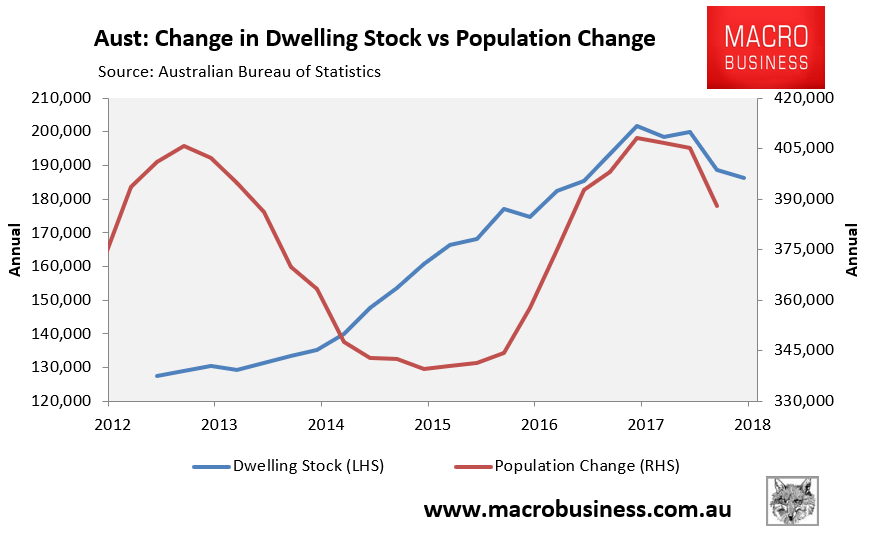
Next is NSW, where after a decade of sluggish construction, approvals, commencements and completions lifted to unprecedented levels but all have since retraced. However, given completions remain significantly below commencements, it could take another few quarters until they peak. Population growth has also retraced from recent record highs:
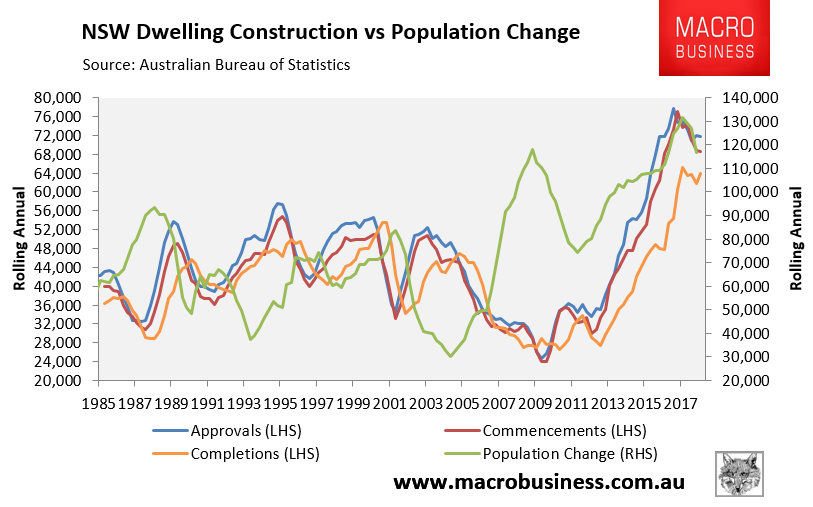
The separate data on net dwelling additions in NSW also shows supply falling more or less in concert with population growth:
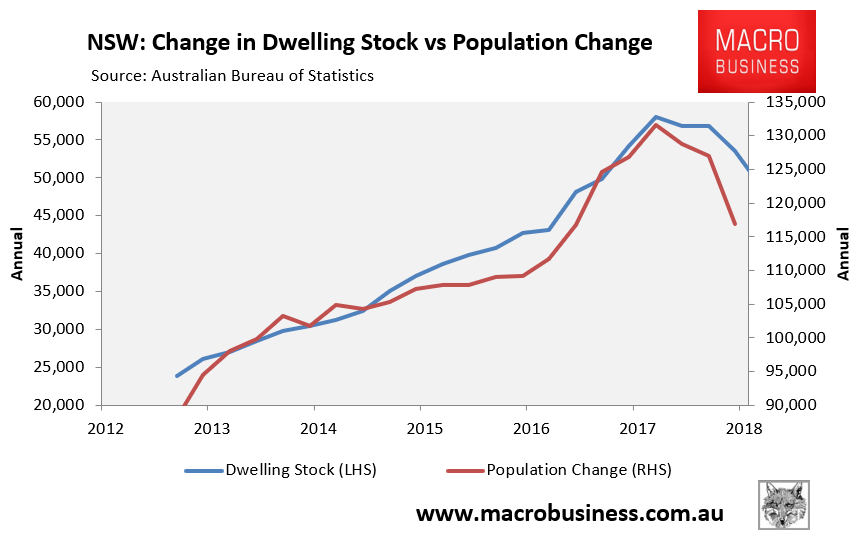
In VIC, which was for a long time the construction leader, both dwelling approvals and commencements have rocketed to all-time highs, whereas completions turned down in the March quarter but should soon catch-up. Population growth, however, is still running near the highest level in Australia’s history at nearly 150,000 people a year:
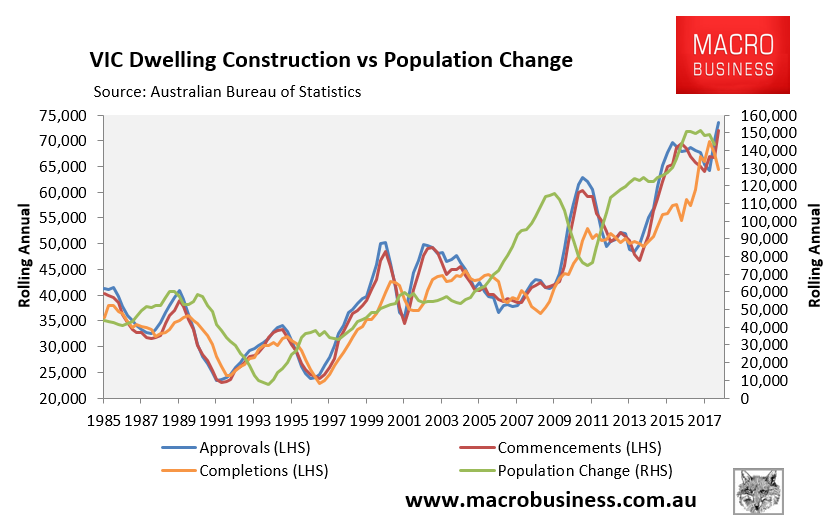
The separate data on net dwelling additions in VIC also shows actual supply falling more or less in concert with population growth:
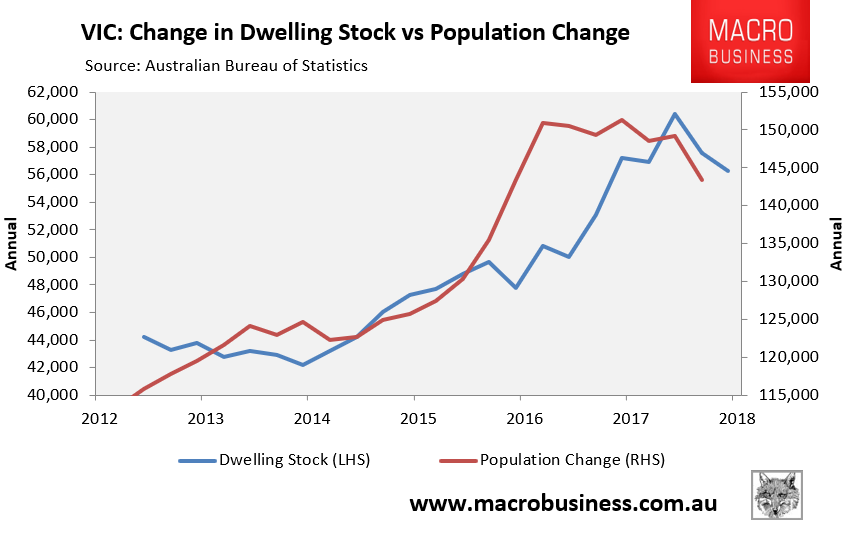
QLD’s apartment glut continues to come online. Dwelling approvals and commencements have fallen sharply from recent highs, although approvals are rebounding. Completions, by comparison, have only just begun to catch-up. After accelerating recently, population growth into QLD also retraced in the December quarter:
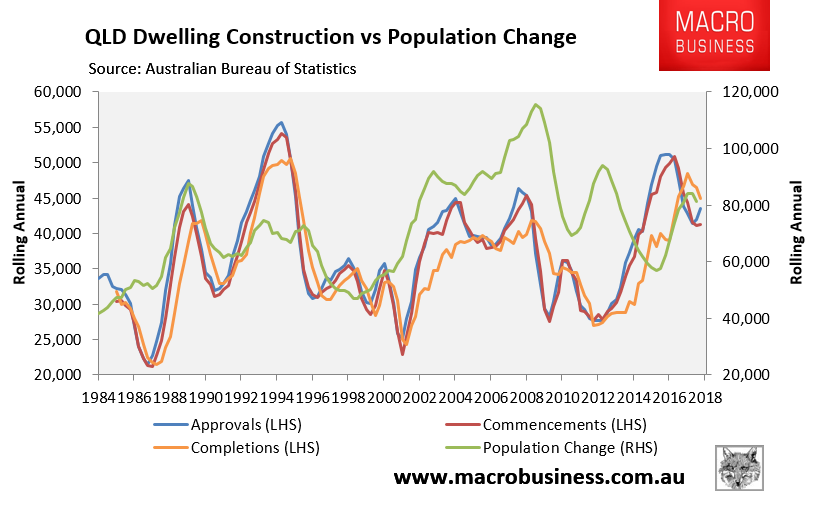
The separate data on net dwelling additions in QLD suggests an increasing housing surplus, with supply rising once more at the same time as population growth has begun to fall:
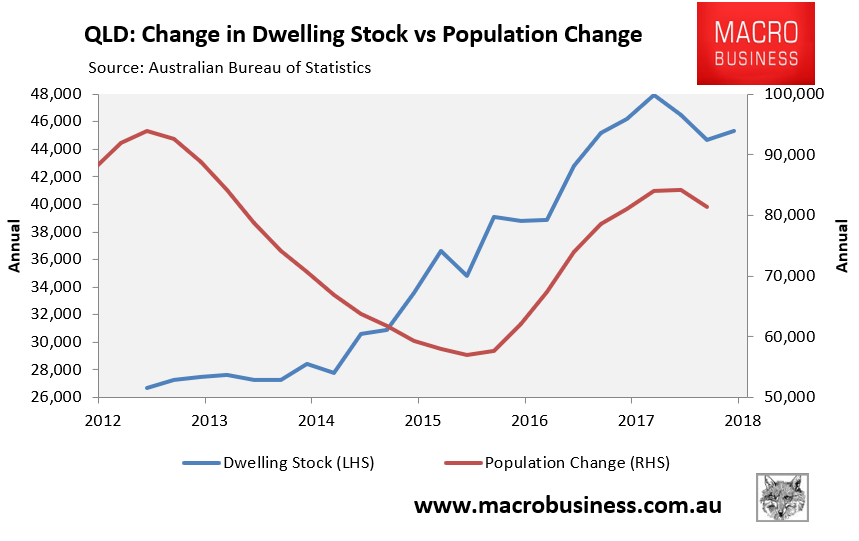
The construction cycle in WA continues to unwind abruptly with approvals, commencements and completions all continuing to plummet. Meanwhile, population growth has rebounded after crashing recently; albeit remains at very low levels:
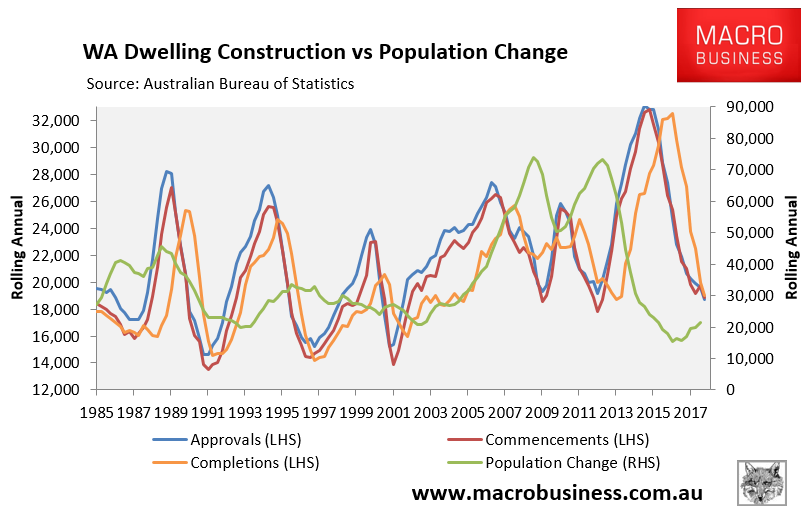
The separate data on net dwelling additions in WA suggests a continuing housing surplus. Supply has rebounded and easily outnumbers population growth:
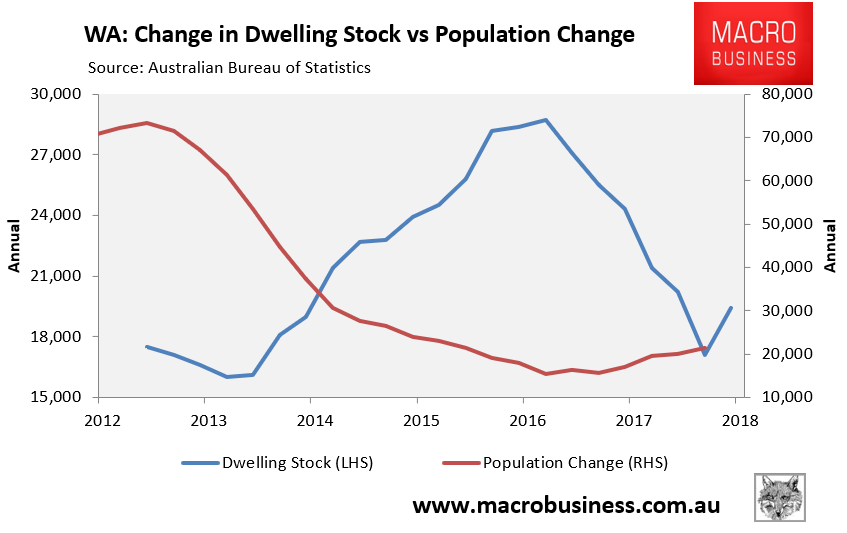
Finally, SA’s housing market looks to be headed into oversupply, with dwelling approvals and commencements having risen recently as population growth has plummeted, and completions still to catch-up:
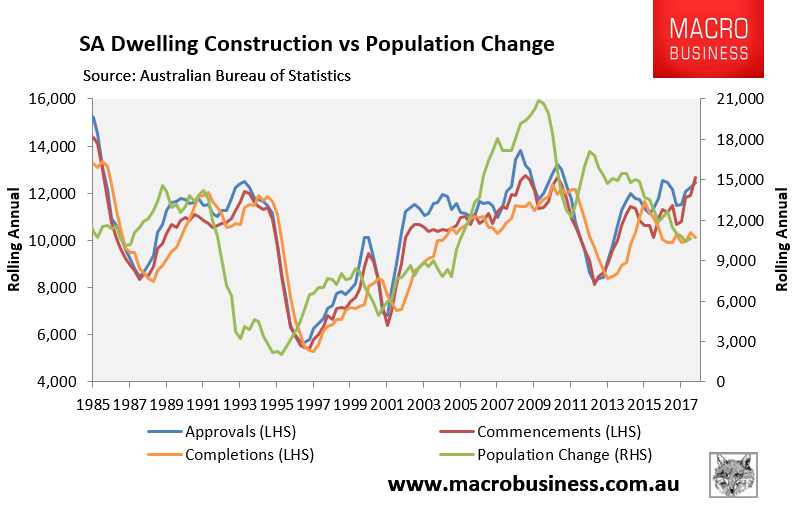
The separate data on net dwelling additions in SA confirms a housing surplus, with strong supply relative to population growth:
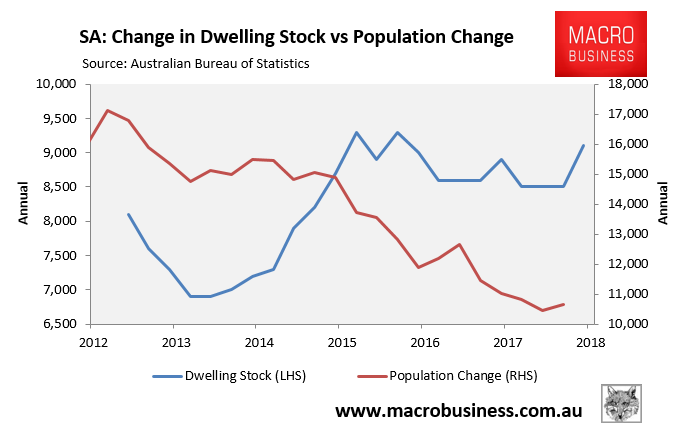
The above data suggests housing surpluses in QLD, WA and SA, whereas supply is more matched with population growth in NSW and VIC.
For what it’s worth, the Housing Industry Association’s latest projections show ongoing falls in dwelling starts:
